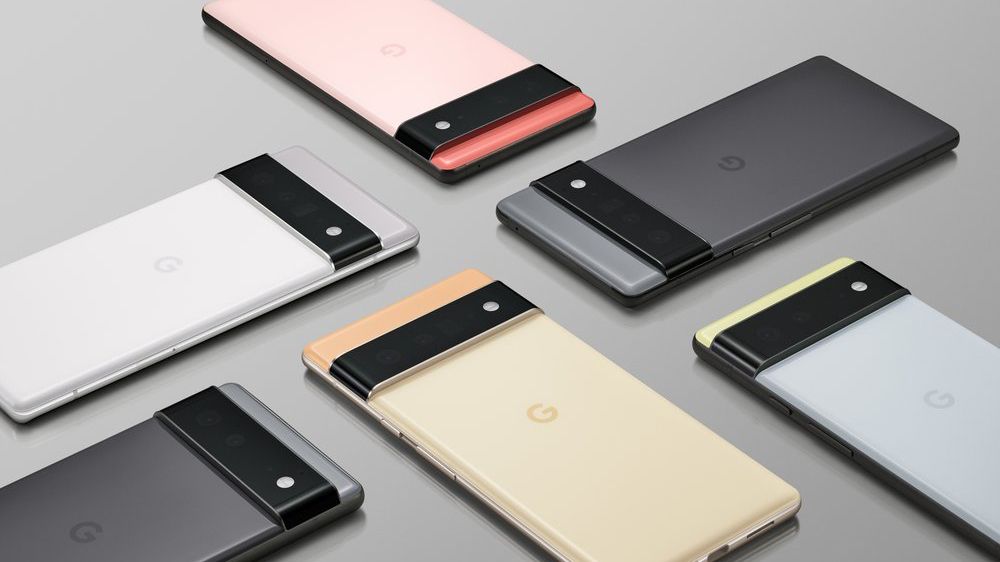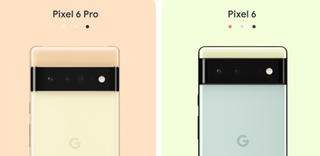Pixel 6, Pixel 6 Pro leak reveals a 50MP Samsung camera sensor — this is a massive upgrade
Pixel 6 and Pixel 6 Pro camera sensor is a huge upgrade

Earlier this month, Google confirmed a number of details about the upcoming Pixel 6 and Pixel 6 Pro, mostly focusing on the all-important custom Tensor chip that will be powering the phones. However, there are still plenty of details that we want to know.
One of the biggest questions is what camera sensors will be inside that unique new camera array. The Google Camera app itself may have just revealed that secret with @Cstark_27 uncovering a reference to a 50MP Samsung sensor in the app's code (via 9to5Google).
- Best smartphones in 2021
- Samsung Galaxy Z Fold 3 is an evolutionary step forward
- Best Galaxy Z Fold 3 pre-order deals
The code contains a listing for "gn1_wide_p21." P21 is Google's internal name for the Pixel 6 phones and GN1 is a 50MP sensor announced by Samsung last year. The Samsung ISOCELL GN1 was on the shortlist for possible camera sensors for the Pixel 6, so it does not come as a surprise, but it lets us hone in on what to expect from these cameras.
The ISOCELL GN1 is a 1/1.3-inch sensor with a 50MP resolution and a native 1.2μm pixel size. One of the clever tricks of the sensor is Samsung's Tetracell technology that effectively doubles that pixel size to 2.4μm. The sensor also has an astoundingly high 100 million phase detect auto-focus (PDAF) agents, which should allow it to focus quickly even in low-light conditions.
This is a massive step up from the Pixel 5 and Pixel 4a 5G, which used the Sony Exmor IMX363, a 1/2.55-inch sensor with a 12.2MP resolution and 1.4μm pixel size. This explains Google's claims that the Pixel 6 can gather 150 percent more light than the Pixel 5, its sensor is almost literally twice the size of the Pixel 5 sensor.

The ISOCELL GN1 hasn't been used in any phones released in the U.S. yet, so this may serve as its debut here. It will be interesting to see how Samsung's tech holds up as while the native 1.2μm comes in below the iPhone 12 Pro Max's 1.7μm if the Tetracell technology works as advertised the Pixel 6 and Pixel 6 Pro should have much better low-light performance at an effective 2.4μm.
Google's Night Sight mode blew everyone away when it first debuted and drove every competitor to bring something similar to the table in recent years. With that said, an improvement in actual low-light photography is still a huge bonus. Night Sight is great for certain situations and Google's astrophotography remains unsurpassed. However, for grabbing a group photo in low-light this sensor should deliver much better results than what we've seen in the past without having to resort to Night Sight.
Stay in the know with Laptop Mag
Get our in-depth reviews, helpful tips, great deals, and the biggest news stories delivered to your inbox.
I still want to hear more about the telephoto sensor in the Pixel 6 Pro and there's the question of what Google's Tensor chip is capable of when it comes to computational photography. But if this is accurate, the ISOCELL GN1 is an excellent upgrade for the main sensor in the Pixel 6 and Pixel 6 Pro and has me as excited as ever for Google to release these phones soon.
Sean Riley has been covering tech professionally for over a decade now. Most of that time was as a freelancer covering varied topics including phones, wearables, tablets, smart home devices, laptops, AR, VR, mobile payments, fintech, and more. Sean is the resident mobile expert at Laptop Mag, specializing in phones and wearables, you'll find plenty of news, reviews, how-to, and opinion pieces on these subjects from him here. But Laptop Mag has also proven a perfect fit for that broad range of interests with reviews and news on the latest laptops, VR games, and computer accessories along with coverage on everything from NFTs to cybersecurity and more.
